The TentBox Lite 2.0 is one of the most popular models in the fast-growing roof tent market, so we’ve been itching to give it a test-drive ever since it was launched. We finally got the chance on a recent family camping trip – and it didn’t disappoint.
TentBox is a brand you’ll be familiar with, even if you’ve never seen one of their tents in use on a campsite. This is because, especially in camping season, it feels like you pass a car every 5 minutes sporting that familiar logo emblazoned above its roof bars.
This impressive British brand, started in 2014 by two brothers who spotted a gap in the market while travelling around France, has gone from strength to strength in recent years. TentBox currently has five rooftop tents in its range (Lite, Lite XL, Go, Classic, Cargo) with prices ranging from £995 to around £2,500, so choosing the right model for you is key.
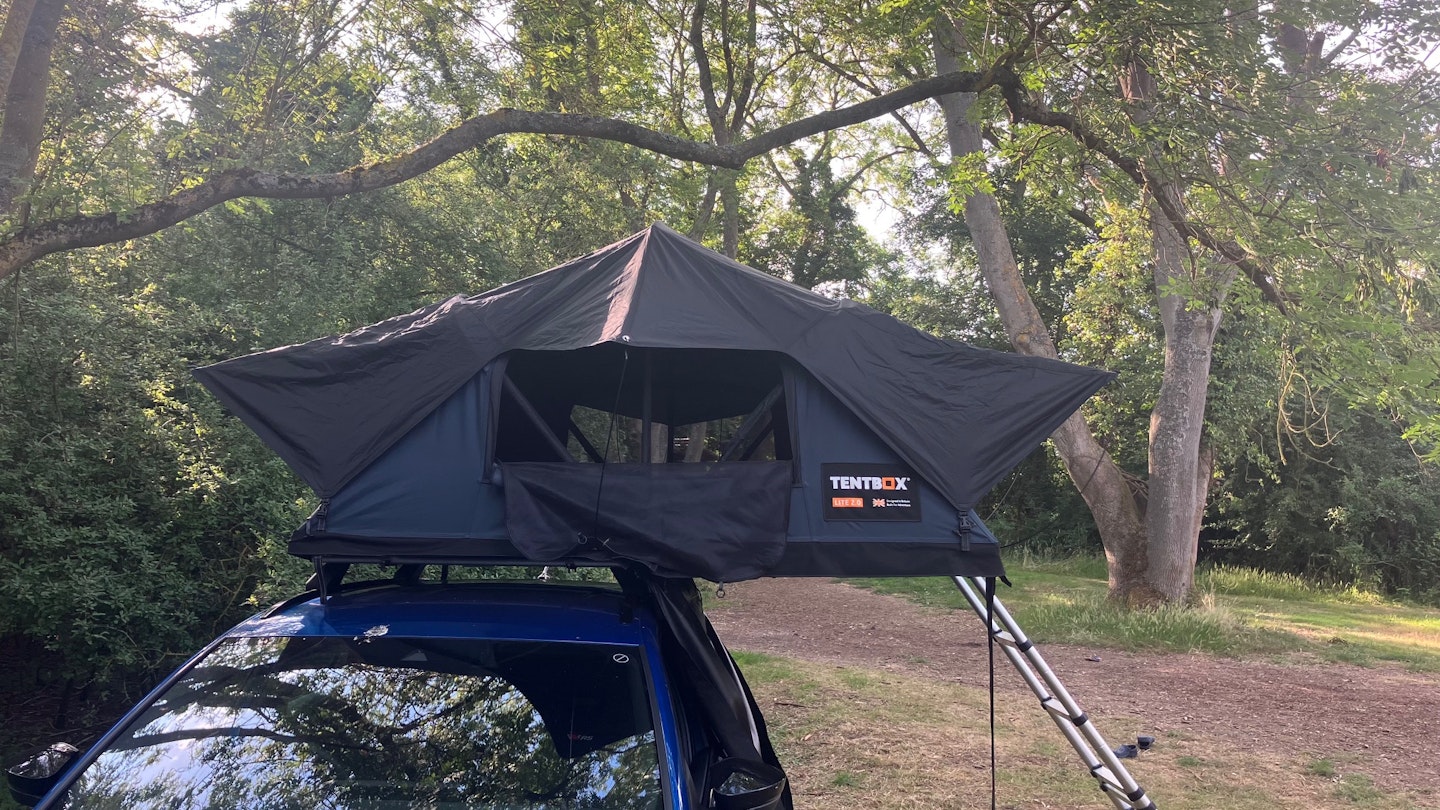 Oli Reed/LFTO
Oli Reed/LFTOtentbox.com
Pros
- Stylish soft shell design
- Quick and easy to pitch
- Durable and well-built
- Lots of excellent features
- Great fun to camp with!
Cons
- A little bit fiddly to fit to your car
| Sleeping capacity: | 2 |
| Weight: | 50kg |
| Dimensions (open): | 133cm x 220cm x 105cm |
| Dimensions (closed): | 133cm x 110cm x 25cm |
| Wind rating: | Up to 39mph (Gale force 8) |
| Materials: | Main fabric: 280gsm rip-stop polyester canvas, with 3000mm HH. Rainfly: 210D polyester, with a 5000mm HH. Travel cover: 600D PVC-backed cordura, with 6000mm HH |
We’ve been using the first incarnation of the Tent Box Lite for around 4 years and have since reviewed the Lite XL and the Classic 2.0. All three are fantastic options for people looking to turn their car into a camper for a fraction of the price of a VW Transporter.
Our experience of TentBox as a brand has always been that their products are practical, durable, full of impressive features, easy to install and set up, and generally just a joy to camp with.
We did have one big question, though. Is the TentBox Lite 2.0 even better than its predecessor? So off we went to sunny Norfolk on a family camping trip to find out.
How we tested
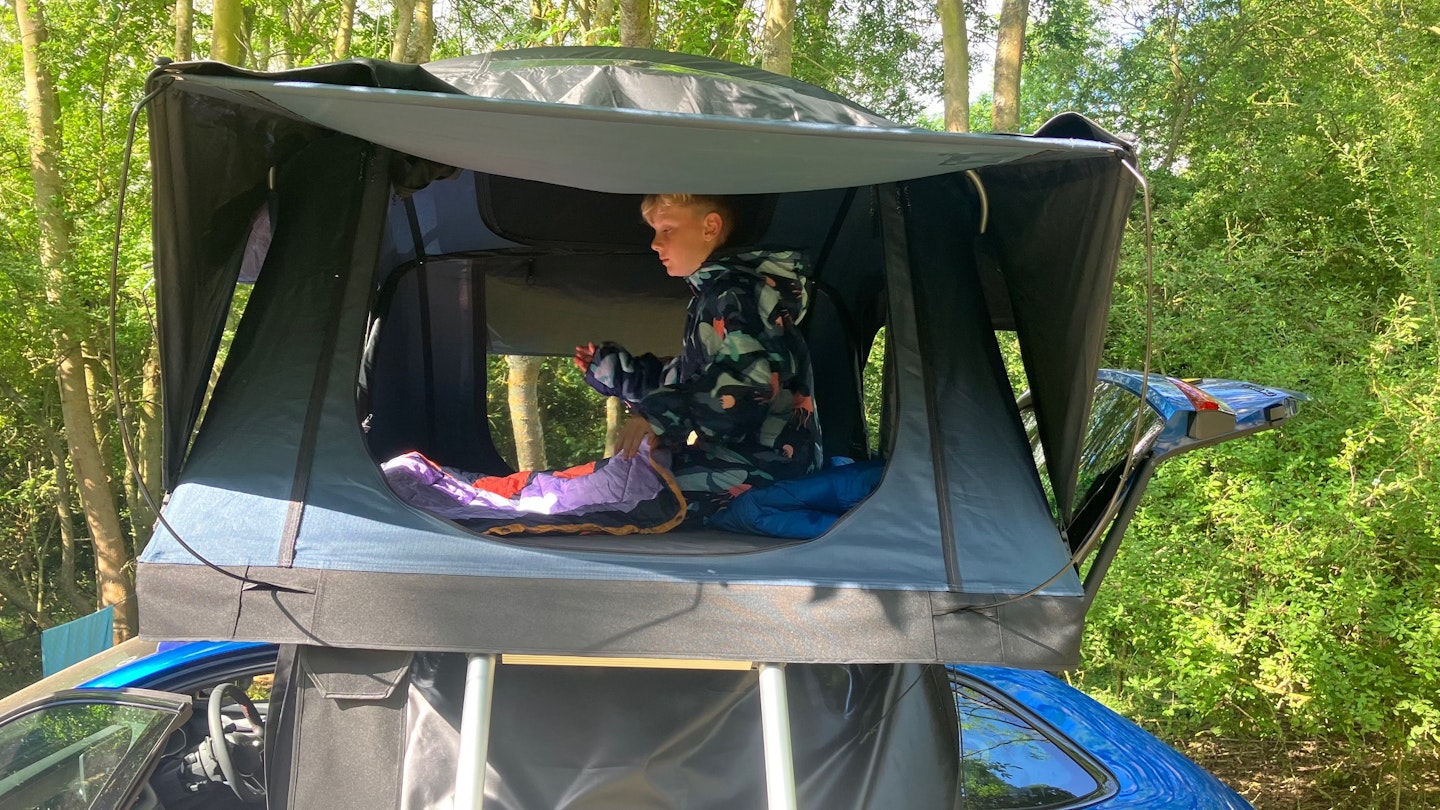
We've tested the original TentBox Lite model everywhere from the Norfolk coast to the Highlands of Scotland. We must have taken it on over 20 camping trips and given it a serious thrashing on each one – and it still looks as good as new.
We haven’t had the newer TentBox Lite 2.0 model on test for as long, but we’ve used it on a couple of trips this summer. Firstly, on a testing day alongside our colleagues at trusted car review website Parkers as part of a larger project to review roof boxes and roof bags, and then on a long weekend of camping to the wonderful Norfolk Brickyard campsite with my two young boys.
Main differences between the TentBox Lite 2.0 and 1.0
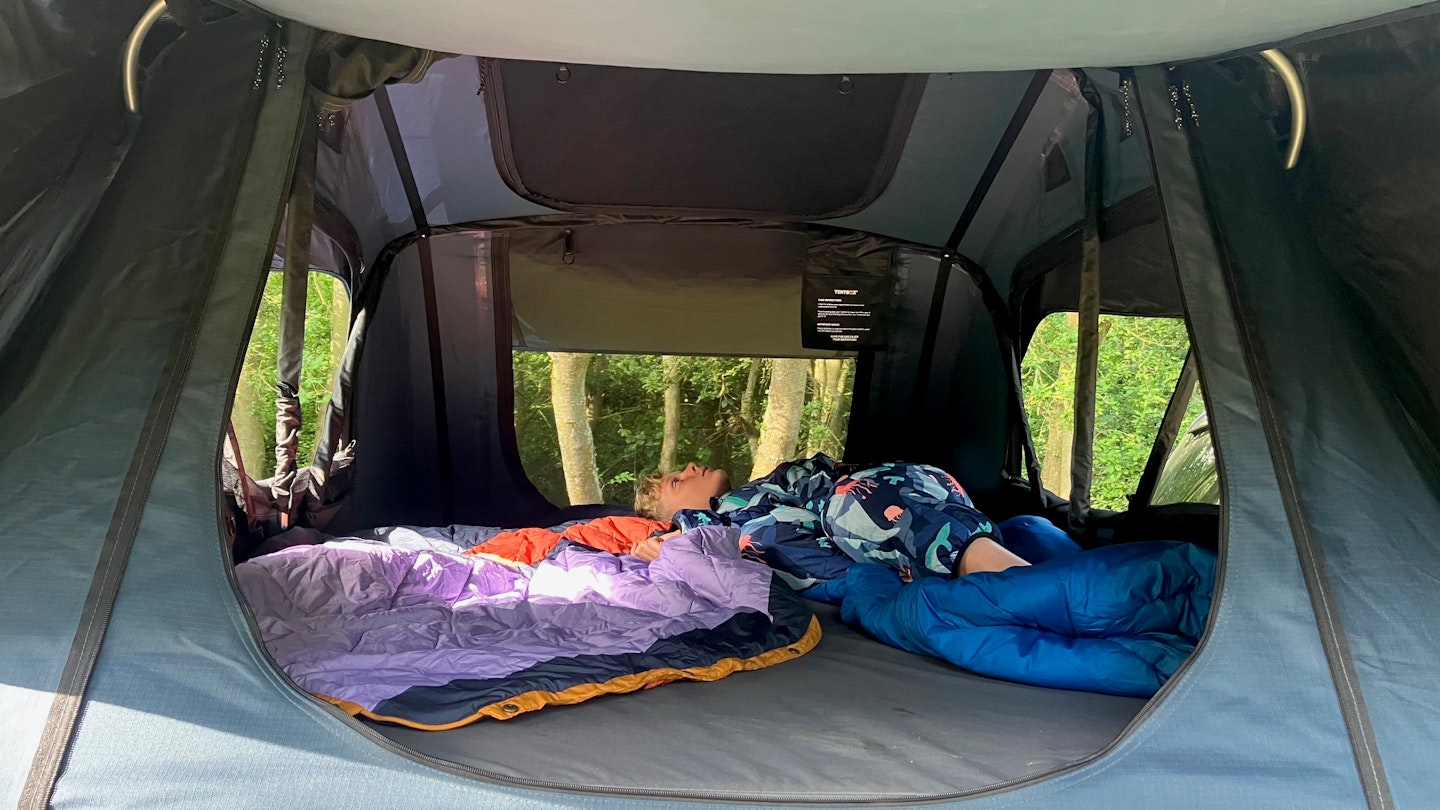
The design of the tent has stayed very similar to the original model, which is good news for owners of the 1.0, because it means your investment doesn’t look dated by the arrival of the 2.0. But the good news for anyone looking to invest in the new model is that although the differences may be subtle, they do represent improvement.
The key difference to point out first is that the 2.0 is a smaller tent. The sleeping area is 133cm by 220cm, which represents a reduction by 7cm in width and a fairly substantial 20cm in length.
In simpler terms, you’ve effectively gone from a king-size down to a double, which in many ways makes more sense for what will usually be either a solo camper or two adults sharing a tent.
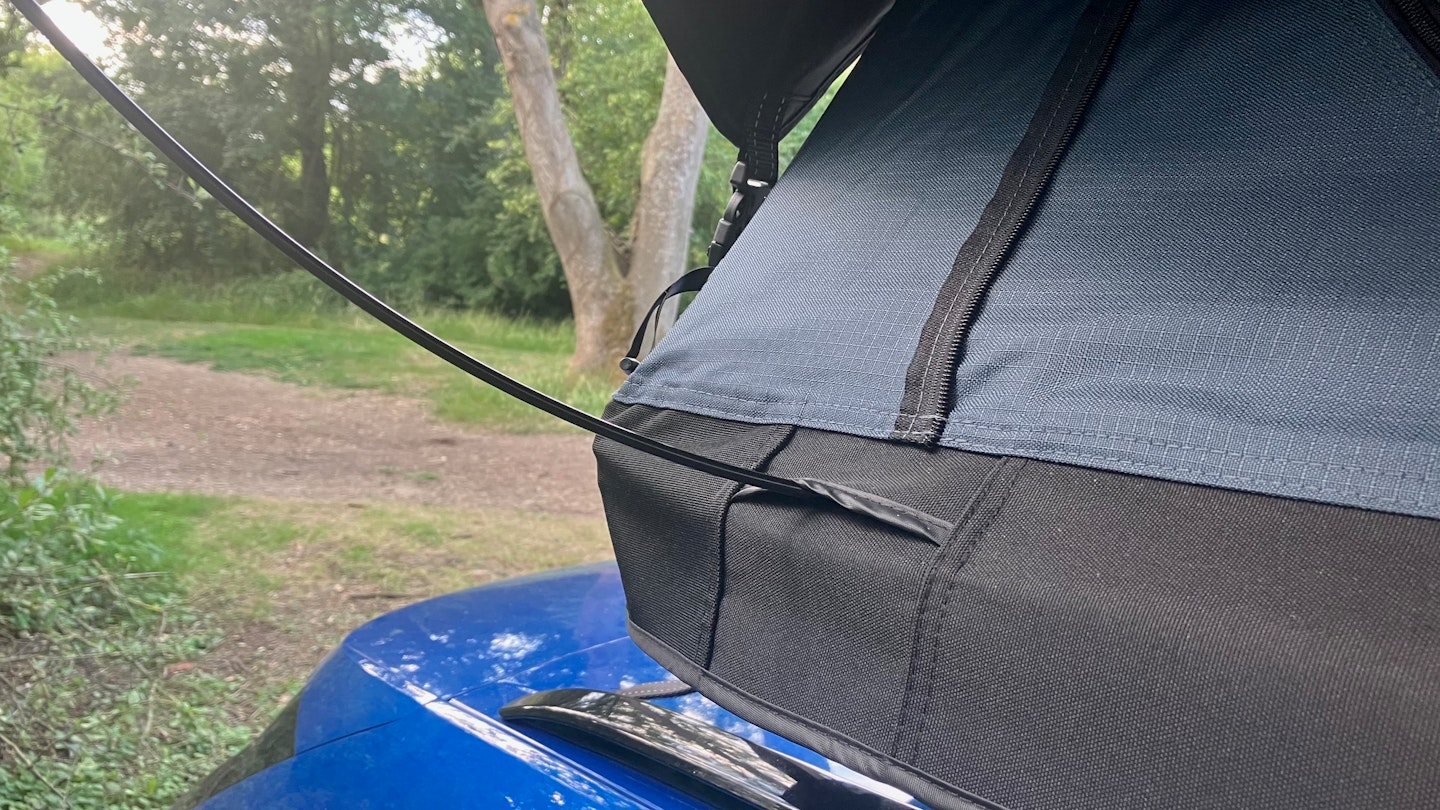
It’s maybe not ideal for someone like me, who usually camps with two primary school-aged sons. But to be honest, they’ve got so big now that even the larger 1.0 bed was struggling to contain the three of us.
Everything else, though, is undoubtedly good news. You get larger windows and a double skylight with the 2.0, increasing natural light. The weatherproof flysheet (which is removable) on the outside has been redesigned, meaning it’s slightly quicker to set up and needs fewer poles to erect than before.
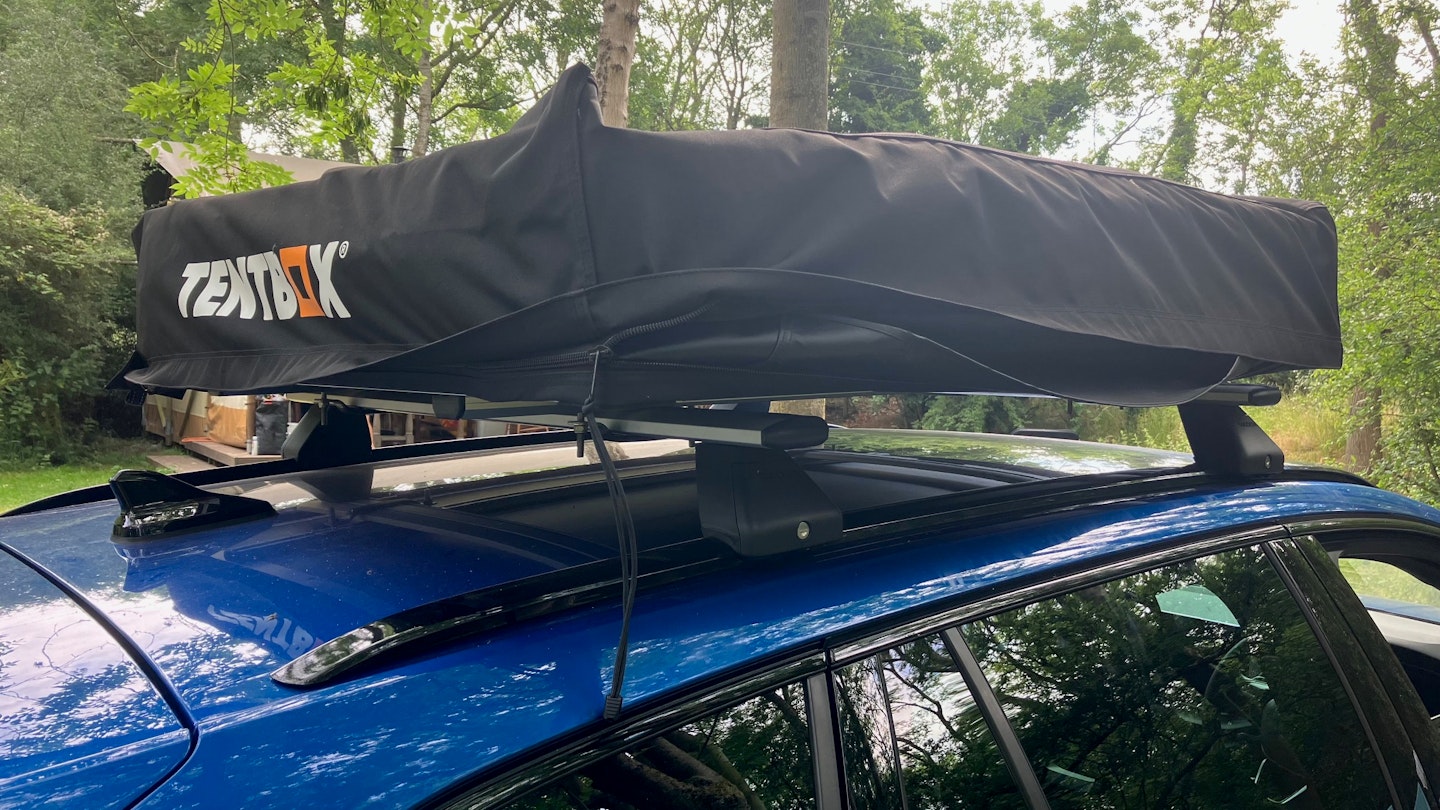
The materials have been upgraded, the ladder has been improved, and we’re sure there are more storage pockets inside the 2.0. The No.1 biggest improvement for us, though, is the travel cover.
Rather than the fiddly Velcro attachments and straps that hampered the original, you now get a heavy-duty Cordura-style fabric which zips all the way round and feels far more secure.
Build quality and weather-resistance
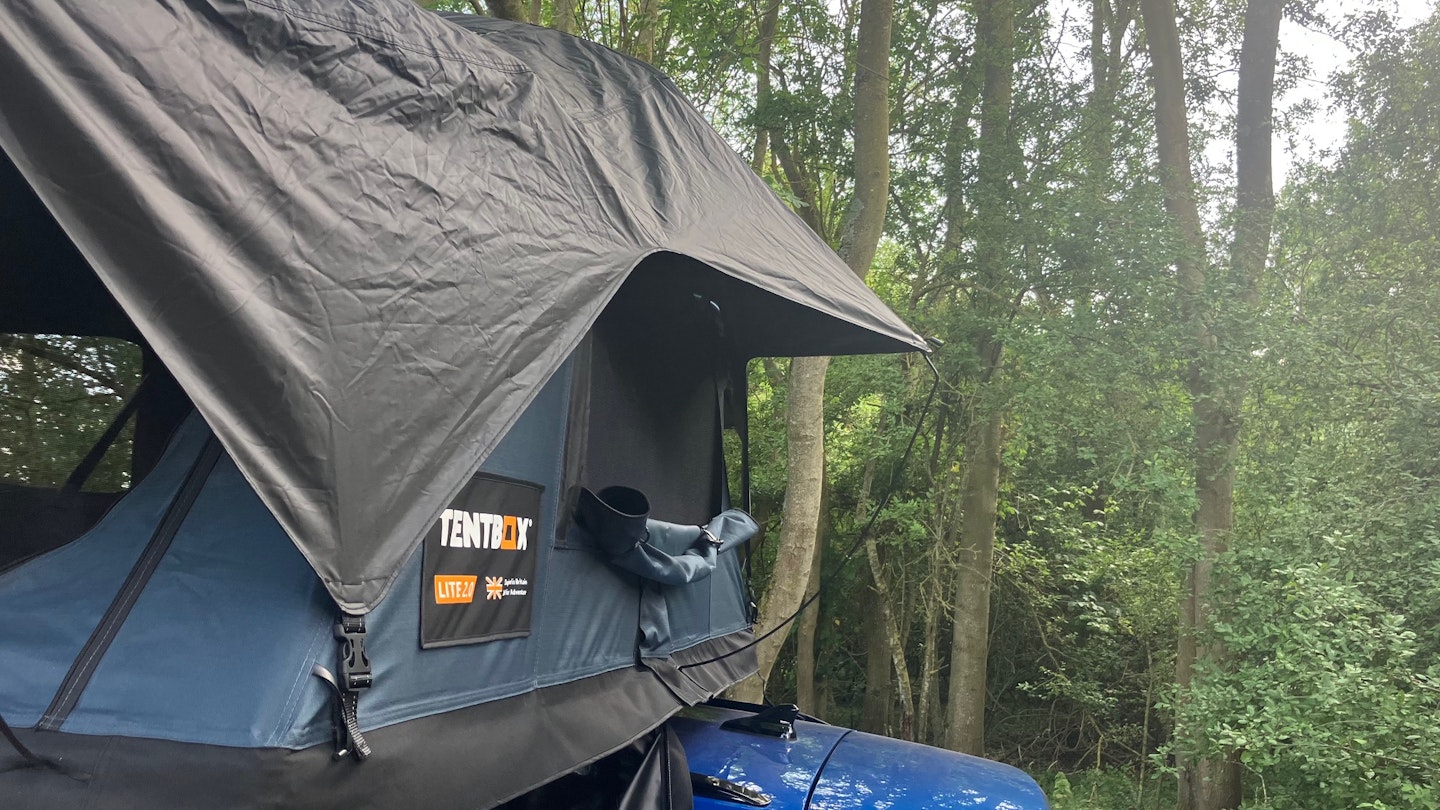
Having tested a few roof tents over the years where the build quality hasn’t overly convinced us, we’re pleased to announce TentBox achieves gold star status once again with the 2.0.
Starting with the main tent, you get a 280gsm rip-stop polyester canvas material with a 3000mm hydrostatic head. We’ve never camped in it without using the detachable rainfly (210D polyester, 5000mm hydrostatic head), but with the way the sides of the tent have held up against some of the weather-bashing we’ve given it over the years, we’d be fairly confident to spend a night without the rainfly in all but the worst weather.
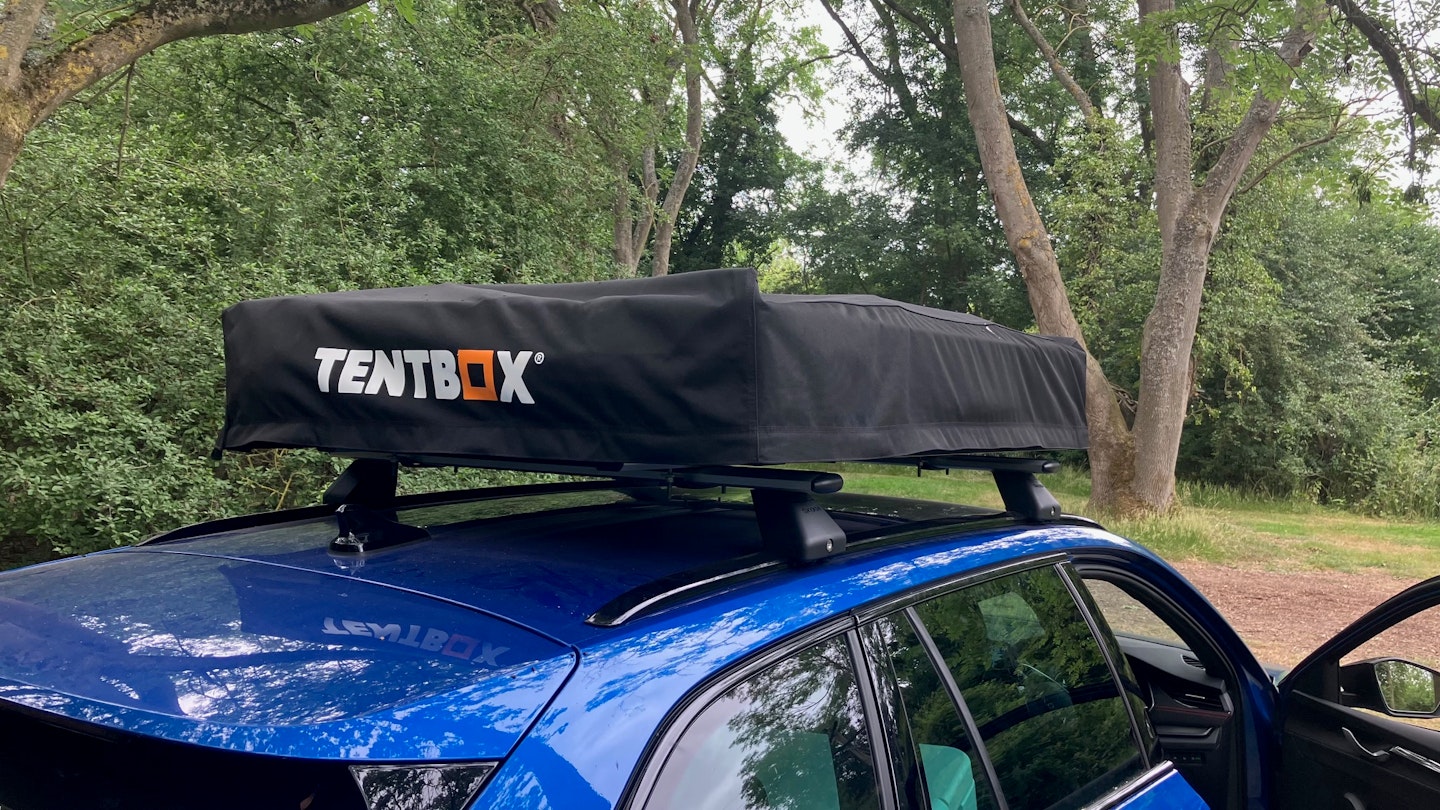
As mentioned above, the travel cover has been hugely upgraded since the original TentBox Lite was launched 5 years ago. The 600D PVC-backed Cordura fabric has a hydrostatic head of 6000mm and, with the addition of YKK zips, feels like it will keep your tent very well protected whether it’s on your car or stashed in a garage or shed.
Everything else about the structure feels premium too, with a lightweight welded aluminium frame, stainless steel hinges, YYK zips throughout the tent, and waterproof zips on windows.
There are also a couple of guy lines to attach to the overhanging base of the tent, which you can either peg out on the ground or attach around the wheels of your car to give the base some extra stability. And we’re glad we did, because when we fitted the tent to the car on a very windy day near our office, one big gust folded the whole tent back up, after we'd popped it open, and snapped it shut.
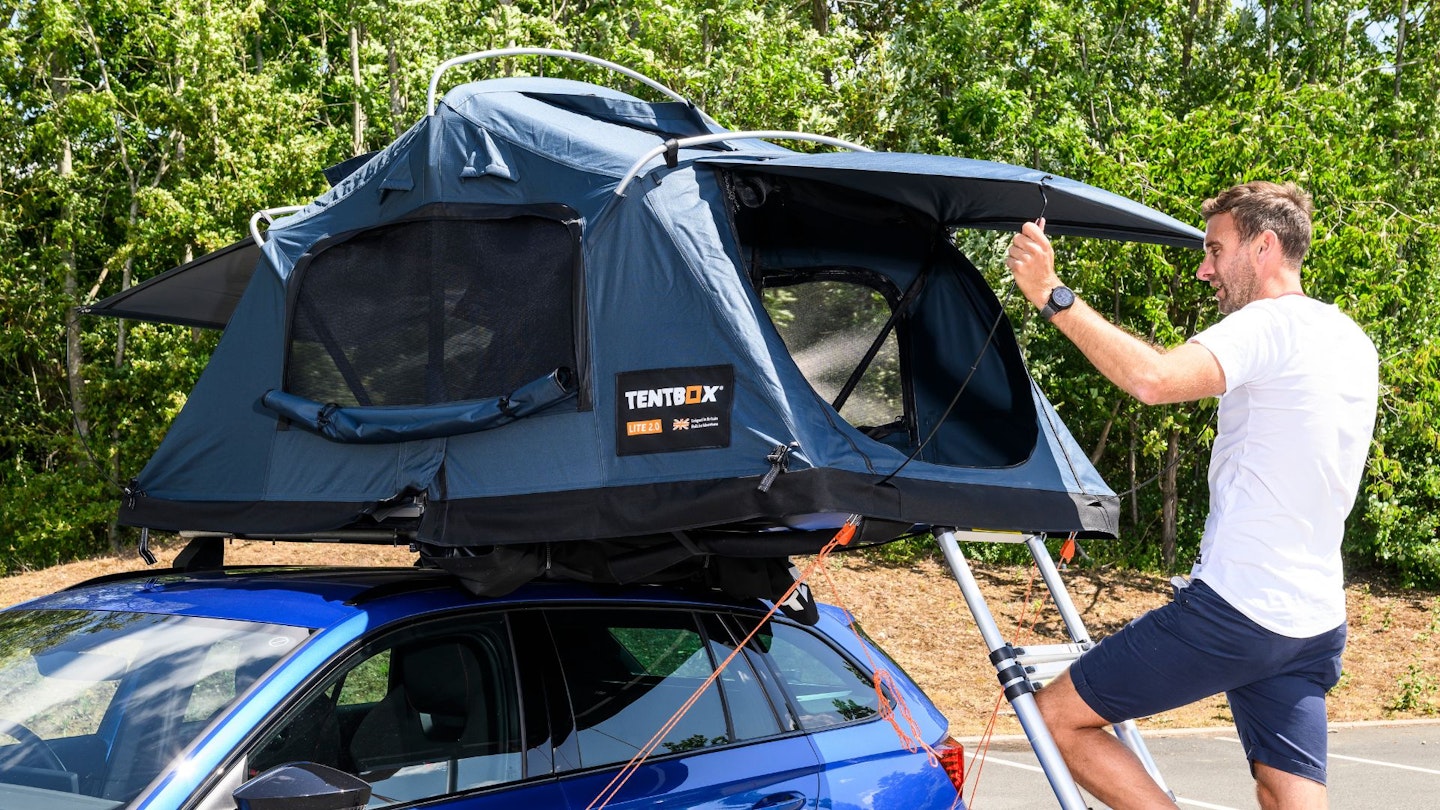
Securing the guy lines made sure that didn’t happen again, so make sure you remember, particularly if you’re pitching in the wind. The tent has a wind rating of 39mph (gale force 8) so it can handle a fair battering, so long as you secure everything properly when pitching.
Comfort and livability
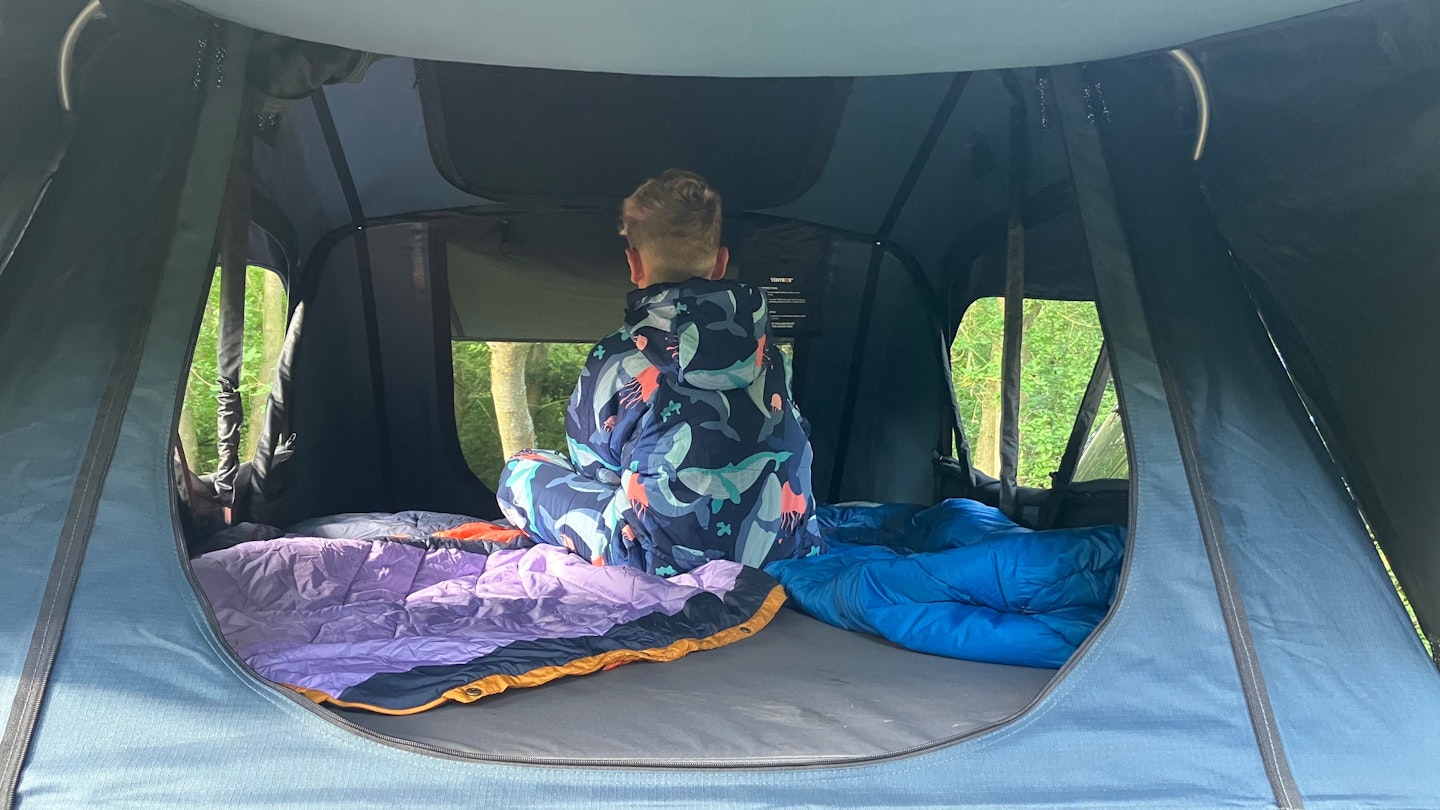
We’ve tested the comfort and liveability levels of the TentBox Lite with just about every combo you could think of – single adult, two adults, one adult and one kid, one adult and two kids – and never been disappointed yet.
Let’s start with that fantastic mattress. It’s made of dual-layer 6cm foam which, to put it bluntly, is about 1000 times more comfortable than any camping air bed we’ve ever used.
The 2.0 mattress may be slightly smaller than its predecessor in terms of dimensions, but the whole interior of the tent still feels very spacious, with plenty of room to sit up and move around when you’re not snoring soundly flat on your back.
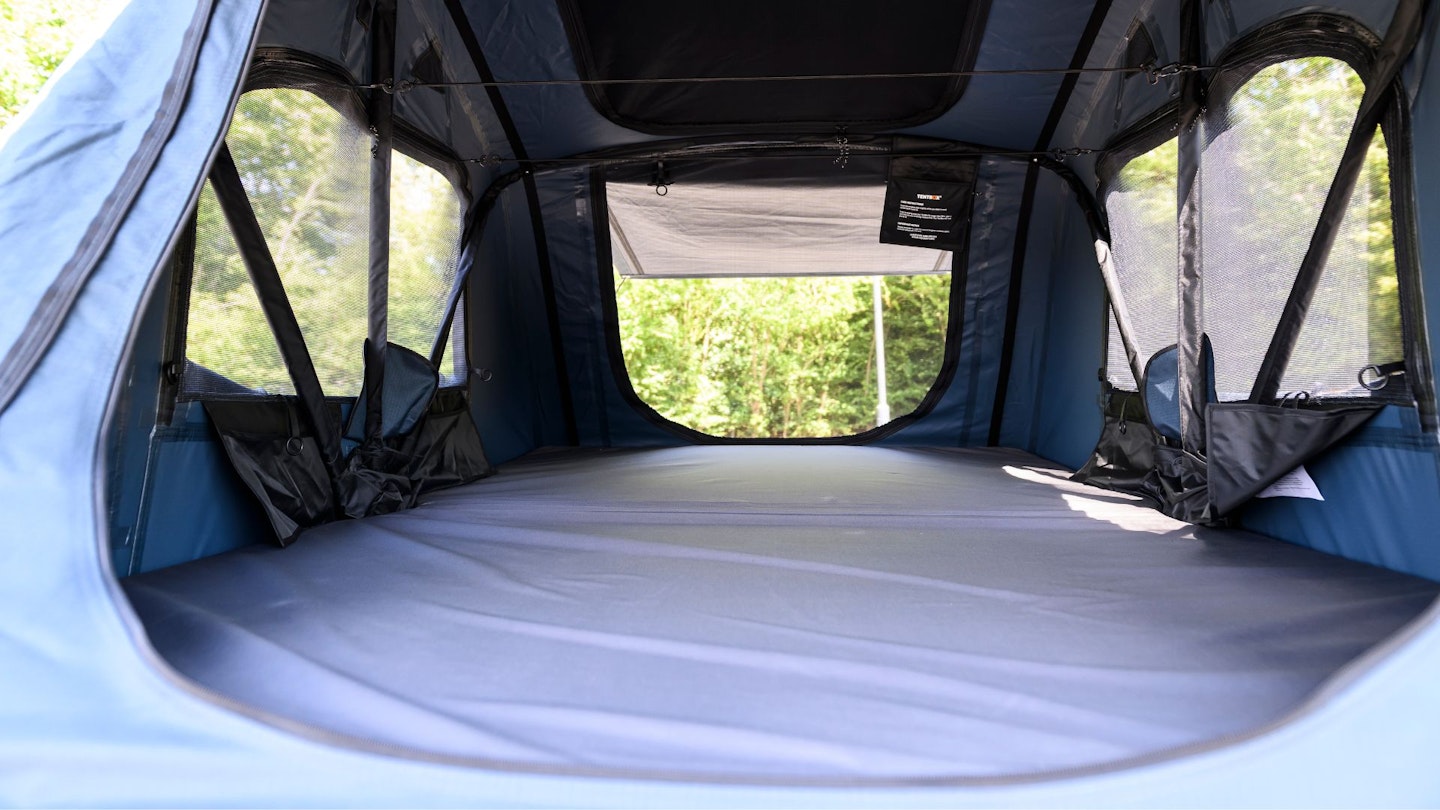
On our recent camping trip, at one point I spotted 8 kids in the tent, sitting around the edges of the mattress and playing a card game. Just after I’d got over the mild shock of panicking that the roof bars of my tent might cave in, it made me realise that this is so much more than just a standard 2-person tent.
As well as being a highly comfortable place to sleep, being inside the TentBox Lite 2.0 is also an event in itself. Kids and adults are drawn to the novelty of it, but also to that fact that it’s a nice place to be, elevated off the ground with multiple windows, openings, and high levels of comfort, allowing you to relax and absorb the area surrounding you so much better than if you were pitched on the ground.
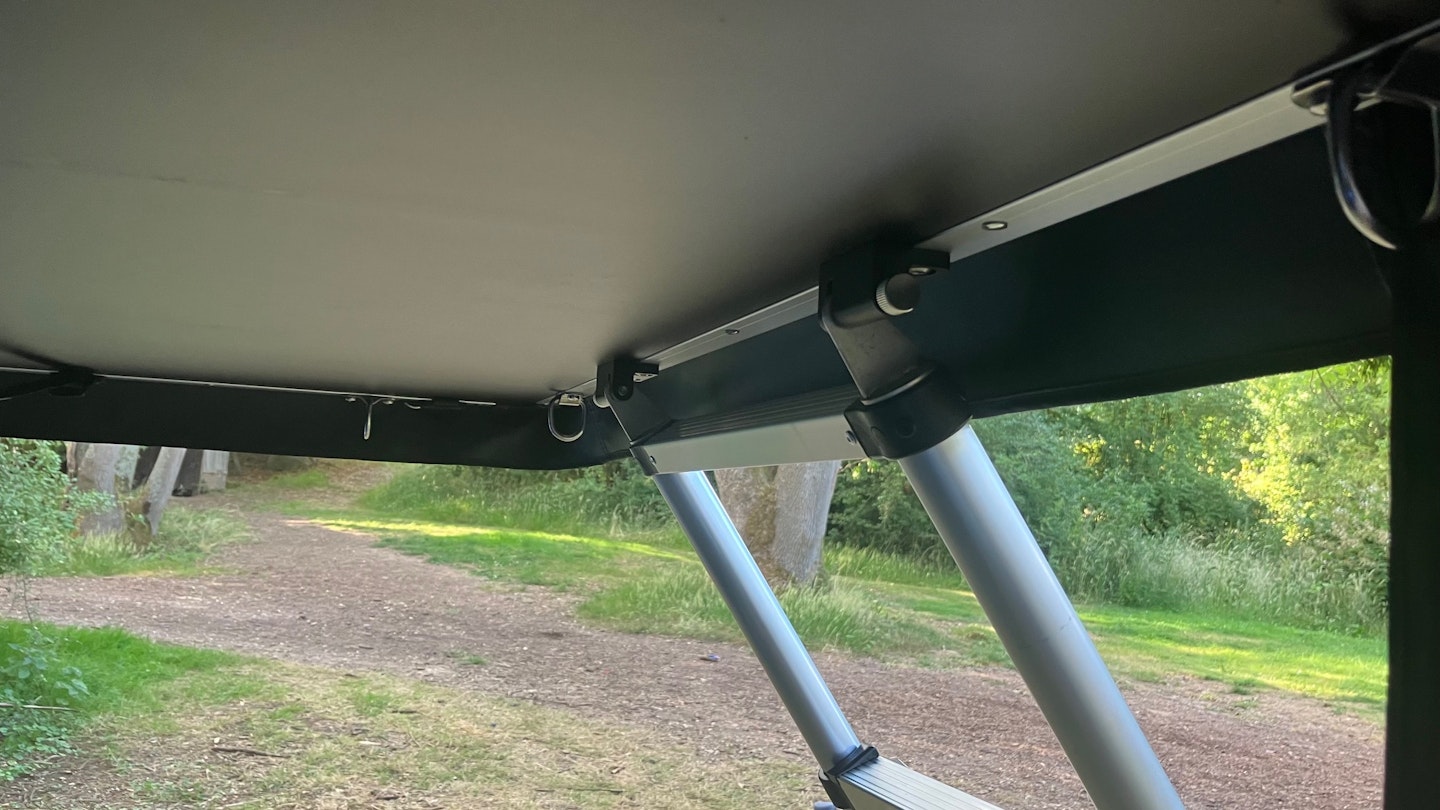
Obviously, the catch is that you have to climb and descend a ladder when using a rooftop tent, and only you will know how comfortable you’ll be with that. Especially in the middle of the night when it’s cold and dark and you’re feeling groggy.
We won’t pretend this is as easy as walking up and down the stairs, because what you get with the Tentbox Lite 2.0 is a fairly standard telescopic ladder. But the rungs are a 'lay-flat' design, so you shouldn’t slip or slide off them, and you’re only climbing to a head height. Even my youngest son, when he was 4 years old, had no issue getting up and down.
Ease of pitching
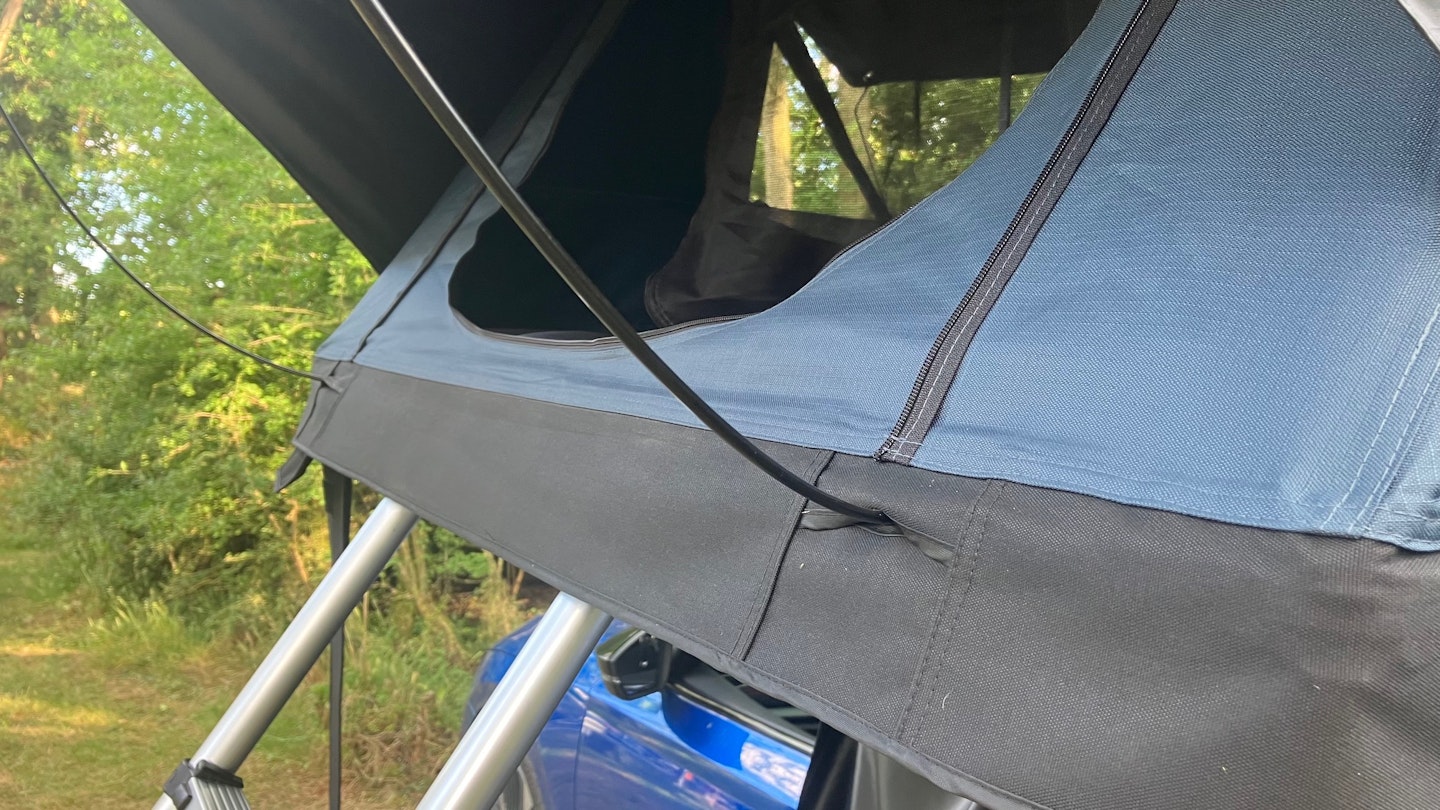
Speed and simplicity of pitching is where roof tents come into their own, and the TentBox Lite 2.0 is no exception. You really can be set up and ready to camp within 5 minutes of arriving at your pitch, with the reverse also true when you’re packing up to leave at the end of your stay.
However, there is a catch. Don’t forget that you need to install the tent first, and that doesn’t happen quickly. For a start, the Lite 2.0 weighs in at a fairly meaty 50kg, so unless you have a similar workout regime to a heavyweight boxer, we’d suggest you need at least one more adult to help you lift it safely and securely onto your car’s roof bars.
Attaching the roof tent to the car is my biggest pain point. There’s no quick way to do it, with four brackets that slide into place along the bottom of the tent and then clip upwards onto the roof bars. Tightening them is fiddly and quite time-consuming, especially since you’ll want to be very thorough, because a mistake could prove incredibly costly with this amount of weight sitting on top of your car.
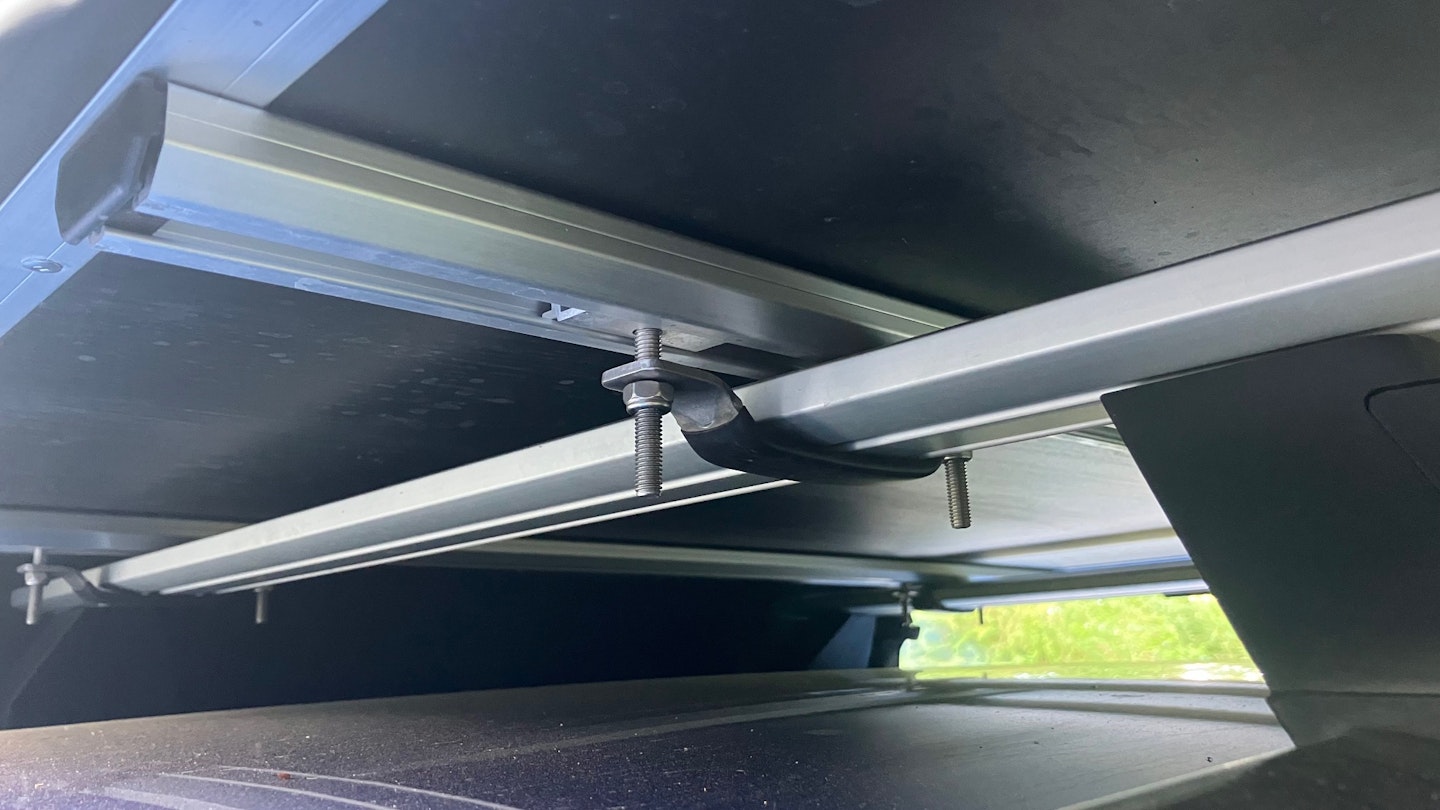
I’ve never timed the process, but I’d say it takes between 30-60 minutes to be completely happy with the installation. So my advice would be, attach the roof tent to your car ahead of your first camping trip of the season, and then leave it on there until after your last one.
Then once you arrive at camp, you simply unzip the travel cover, unfold the tent (the structure pops up as you pull down the ladder), and set the ladder to the right height. Then it’s just a case of inserting the six poles that give the rainfly its shape, and you’re good to go.
Portability and compatibility
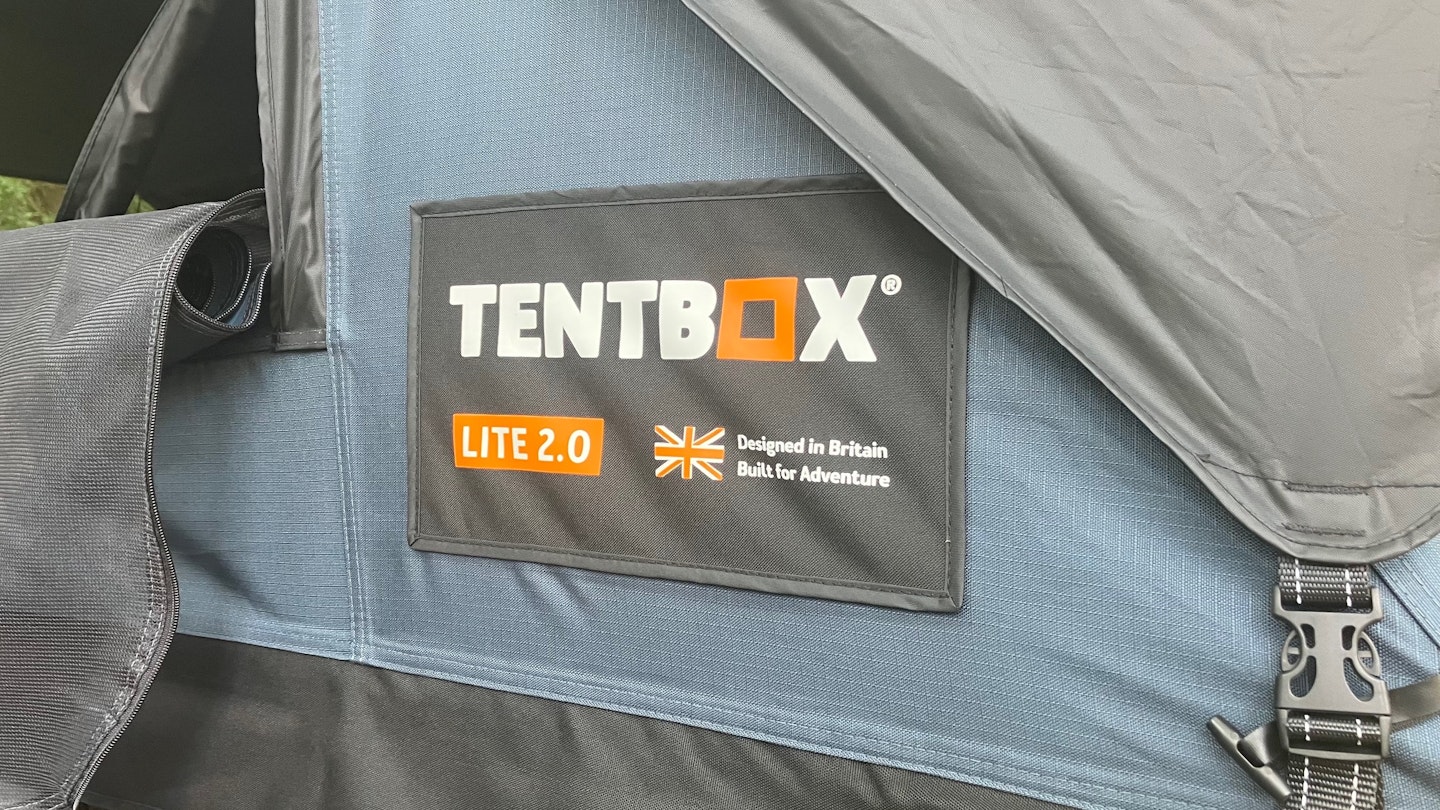
As the TentBox website proudly proclaims, you can fit one of their tents to almost any vehicle, from small hatchbacks to large vans. We can only speak from our experience of the TentBox Lite 1.0 and 2.0 models, which we’ve used on a Vauxhall Astra estate, a Peugeot 2008 and a Skoda Octavia estate, and all have been able to easily handle the weight.
We’ve also seen them used on smaller cars, covering everything from Peugeot 208 hatchbacks to the classic and compact Fiat Panda, with no complaints from the users. As mentioned above, the TentBox Lite 2.0 weighs in at around 50kg, so it’s a heavy structure to have sitting on your car.
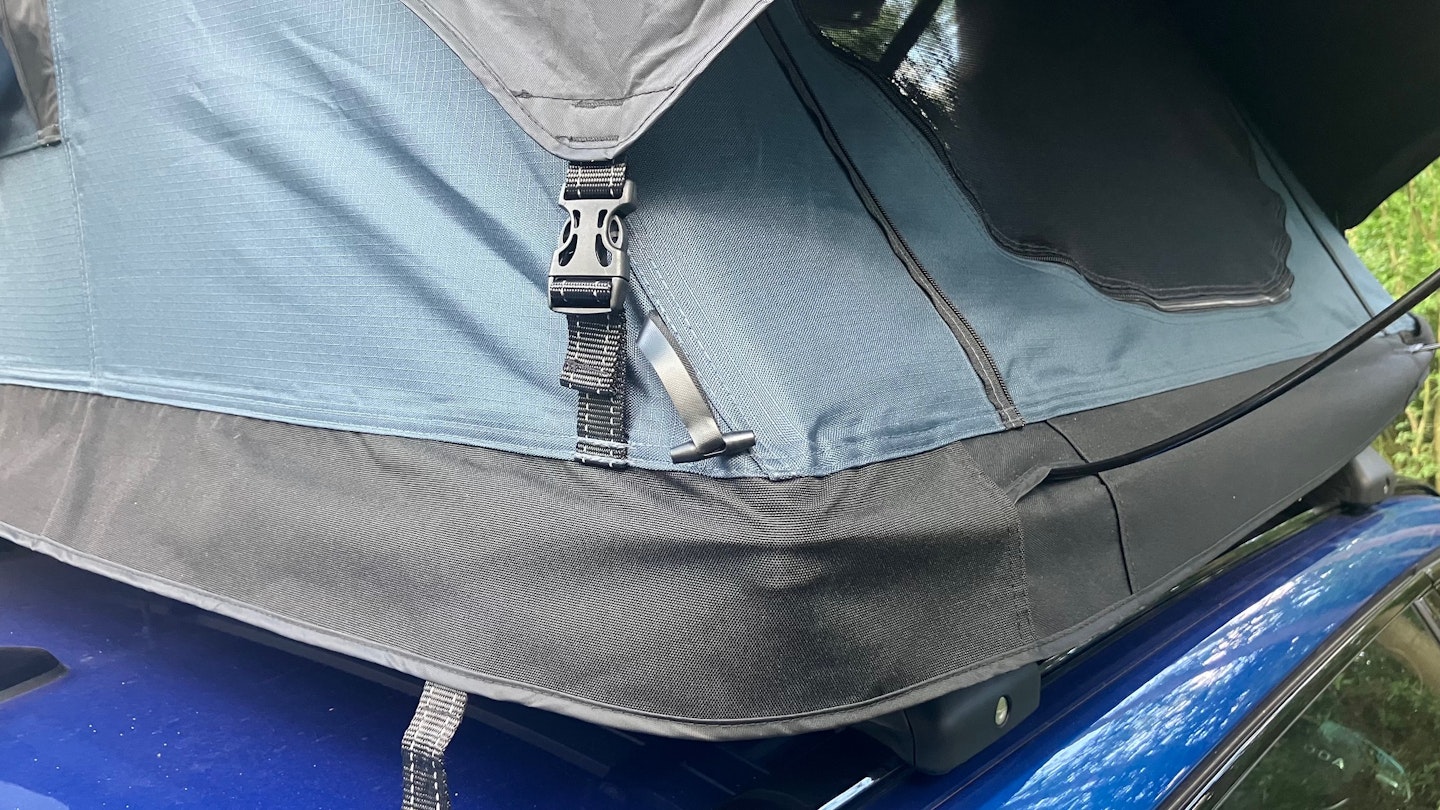
The essential addition you obviously need to fit one to your car is a set of roof bars, and if you aren’t sure which ones to go for then it’s worth checking out TentBox’s very own online fitting guide.
TentBox even sell their own roof bars, which may be a good idea if you want peace of mind. I personally use the Thule Wingbar Edge and find it great for the TentBox Lite, among many other things like bike racks and roof boxes.
What's it like driving with a TentBox Lite 2.0 on your car roof?
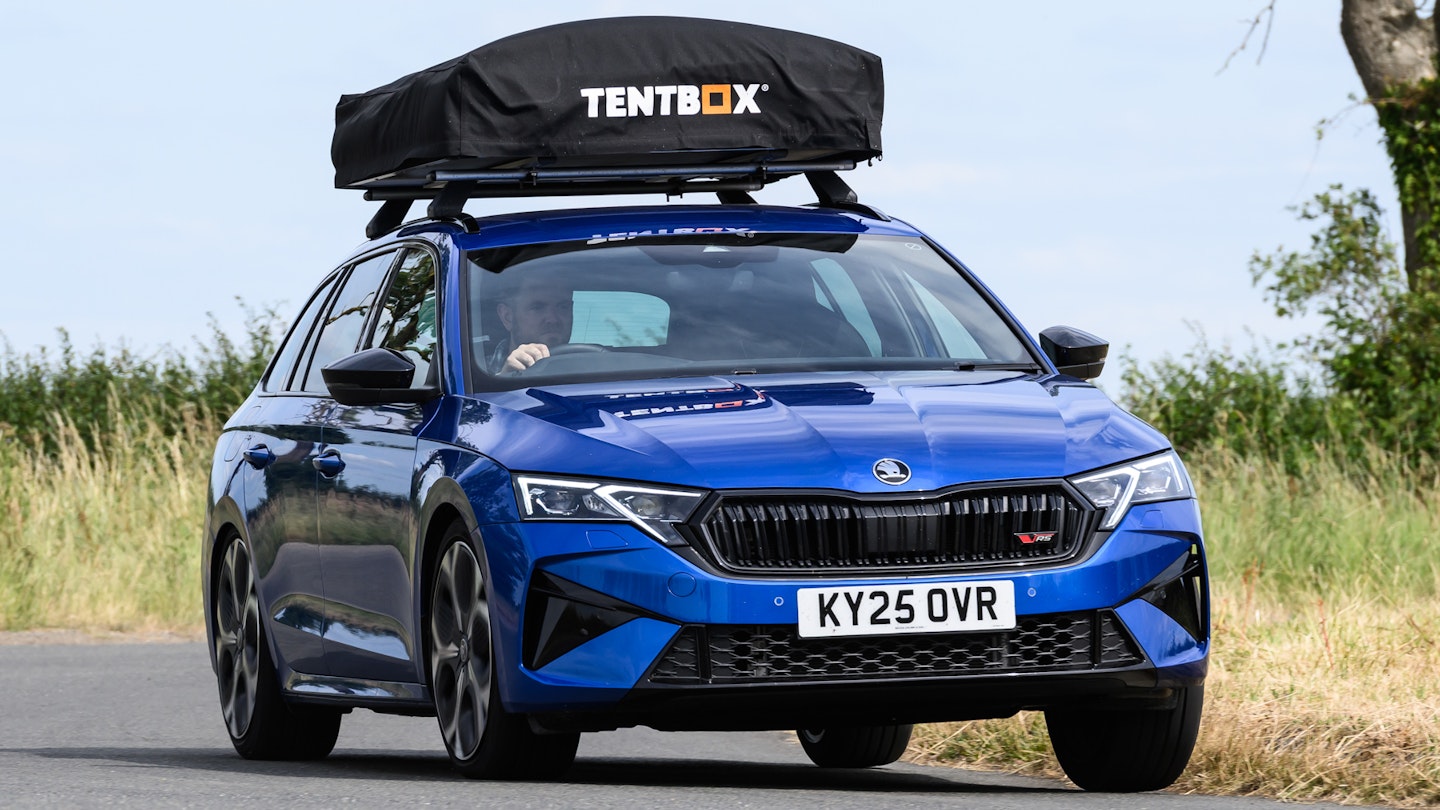
I’d also be lying if I said I’d ever noticed any kind of drag in terms of the car’s performance, or a huge jump in fuel consumption, as a result of using a roof tent. I’ve driven some big distances with the TentBox Lite on my car and the best compliment I can give it is that I forget it’s on there until we reach the campsite. If you’re a frequent camper, you’ll save yourself so much time over the course of the summer if you do it this way.
For a second opinion we asked former Parkers car reviewer and now product testing editor Adam Binnie to drive the Skoda Octavia vRS Estate and TentBox Lite 2.0 combo and give us a verdict.
He said: "I'm very familiar with the Octavia Estate having road tested loads of them, including a year-long living-with-it-test of two vRS Estates just like the one we've got here. You can imagine my surprise when I discovered the extra weight positioned high up on the car had very little effect on the acceleration, braking distance, and handling during normal driving.
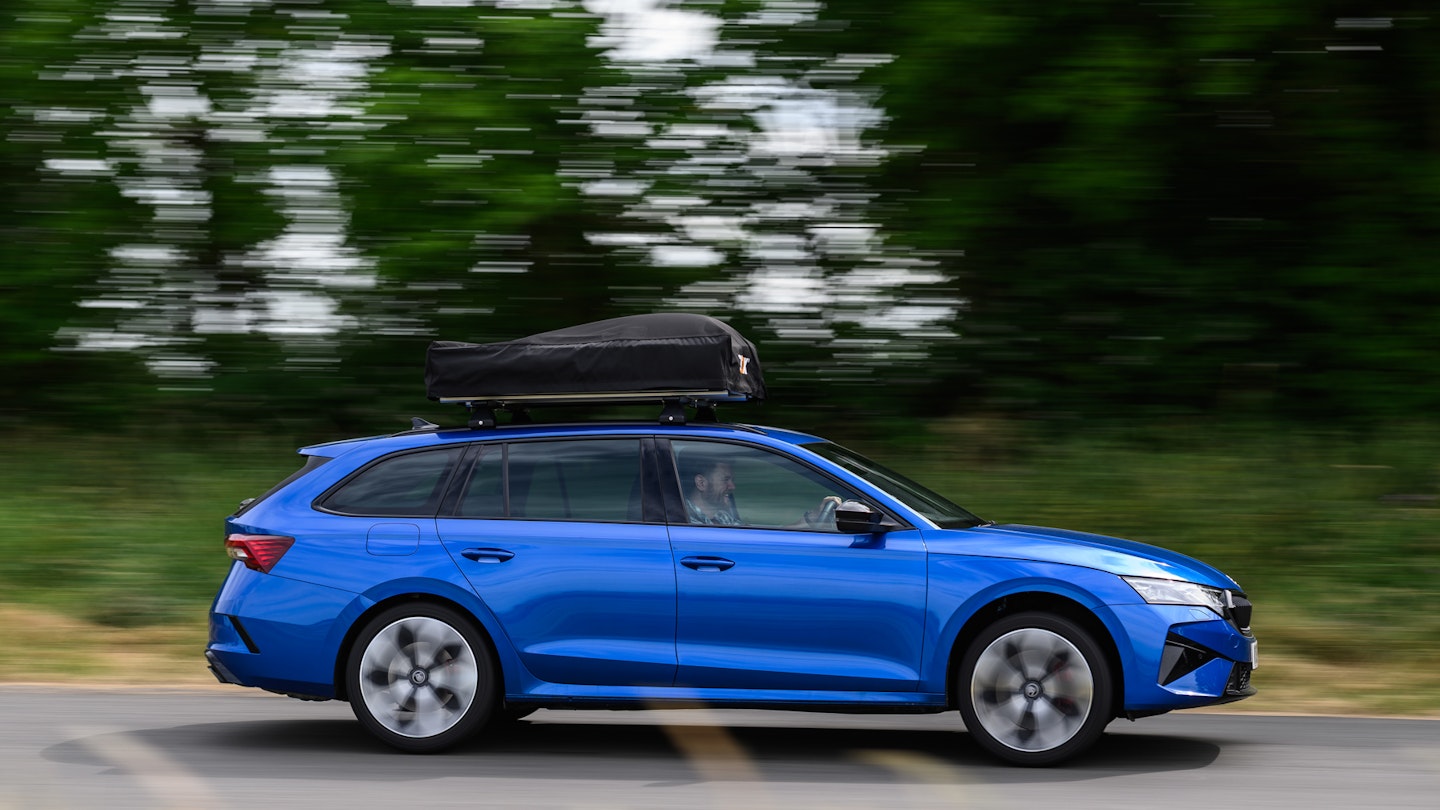
"That might have something to do with the fact that the vRS is a performance model, and benefits from a surplus of engine power and better cornering ability to start with. If you want to enjoy those things on a twisty road, you do start to notice the extra bulk. The car leaned over more around tight bends and I also felt the front lift up when accelerating hard, but still within acceptable limits.
"You're not going to be doing those things in the real world with a car full of campers and a tent on the roof anyway, at which point the ability to accelerate to motorway speed with ease and negotiate bends without the car swaying too much to the left or right, is a major advantage. The fuel economy sat between 30-35mpg too, which is broadly what I would get in my old vRS with a roof rack attached, so that's impressive. Quite tellingly there was also very little wind noise even on the motorway.
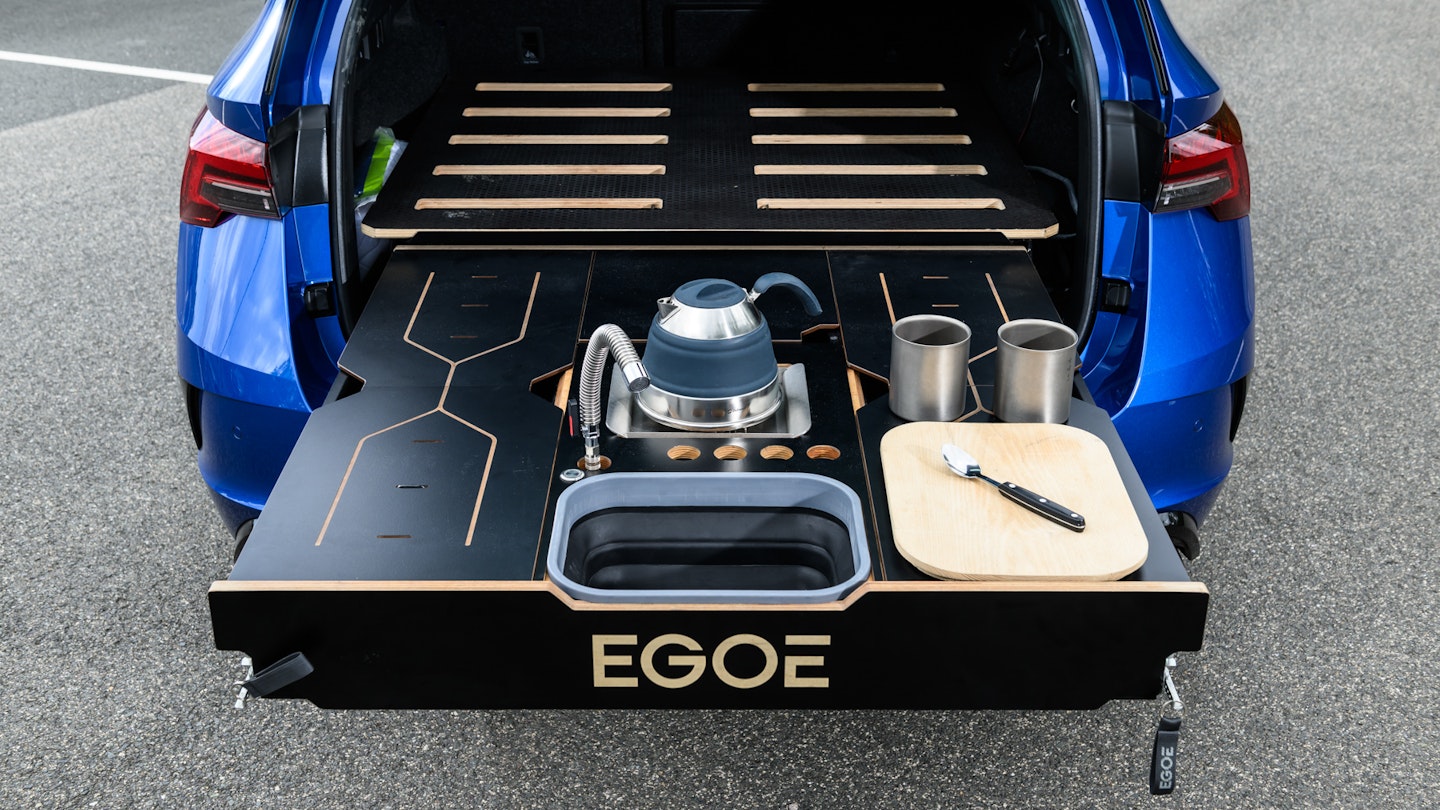
"The car we tested had an Egoe kitchen box build into the boot. The Octavia Estate has an absolutely enormous luggage capacity so this wasn't a problem, with some extra packing space left above and below the box itself. I reckon it's fine for two people but you'll start to run out of room with four, unless you're all travelling light, at which point it'd be more space-efficient to just pack a gas burner, plates etc separately.
"All the other best bits of an Octavia Estate remain unchanged - it's comfortable, spacious, and super easy to drive with an interior that manages to be simple to use and nice to look at."
Our favourite TentBox Lite 2.0 features
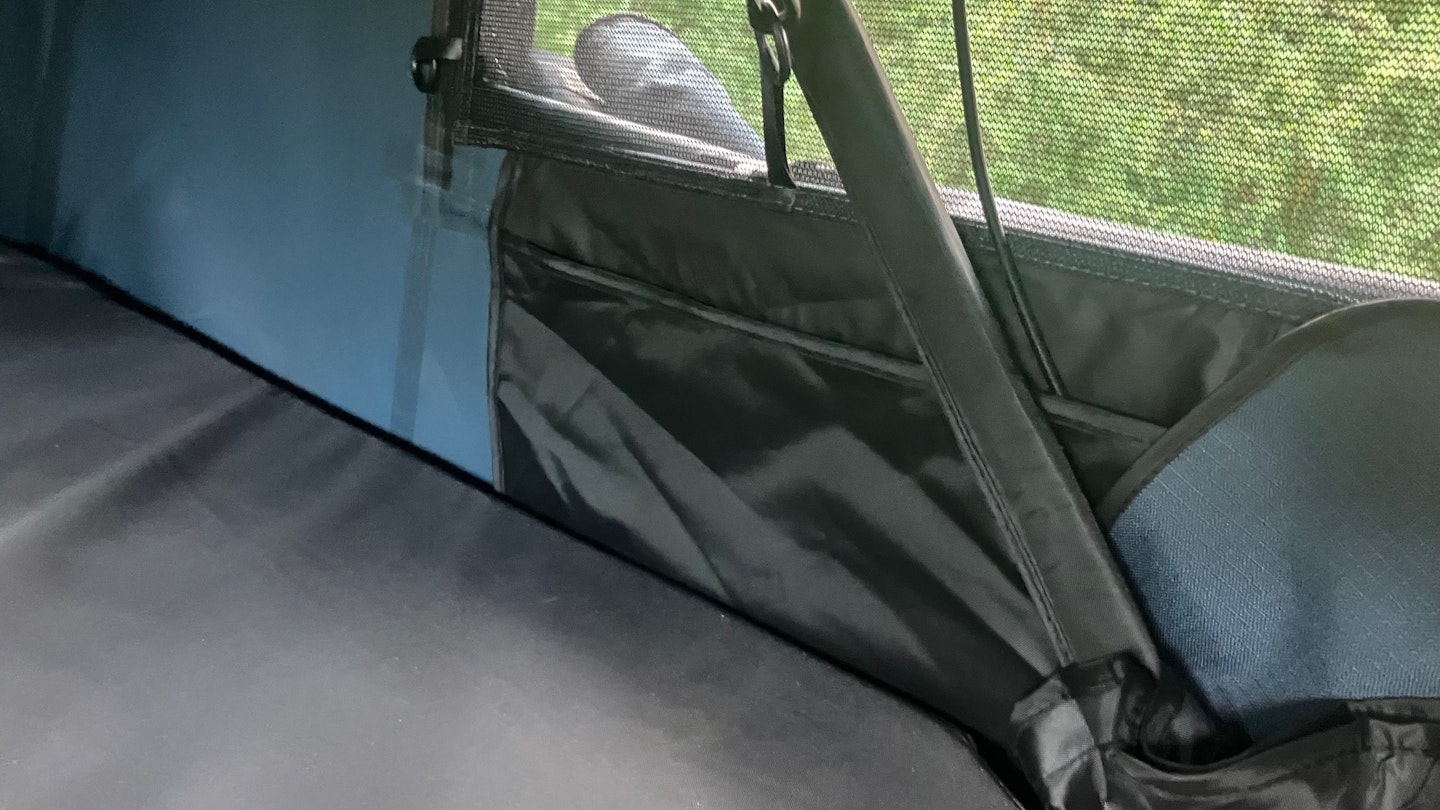
This could turn into a long list if I’m not careful. Firstly, I like the addition of the Forest green colour to the 2.0 range. I previously owned the Slate version with my 1.0 (which is what we’ve tested again here) and although it looks great, there’s something very cool and classy about the Forest addition.
The double skylights are a nice touch, particularly for stargazing on clear nights, and the storage pockets are excellent. You get long side pockets for things like phones and car keys, one small hanging pocket, useful storage straps under the fold-out base, plus a drop-down storage bag for the poles. That’s particularly useful if you remove the rainfly while you're camping.
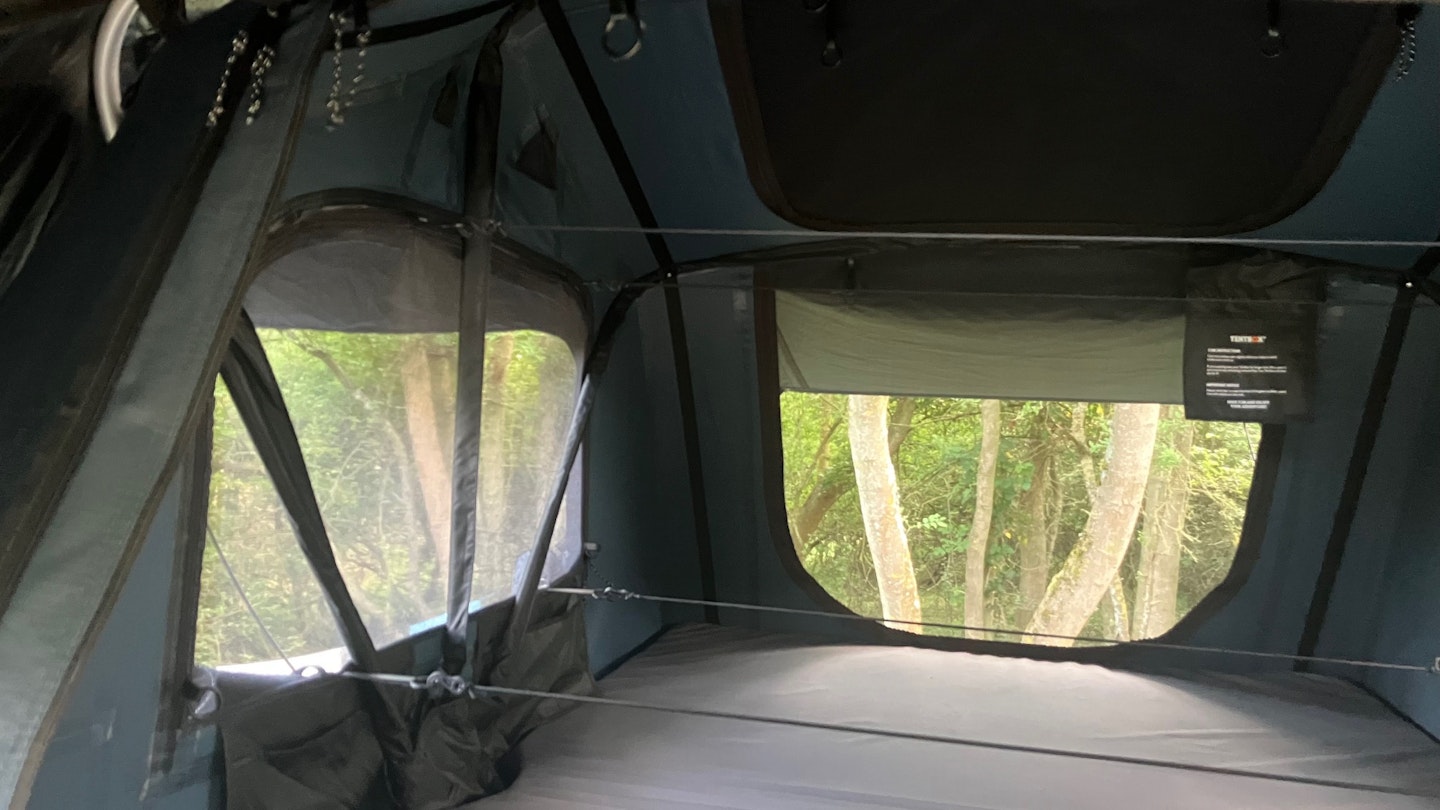
The anti-bug mesh on all windows and doors is a great addition, as are the internal tensioning bungee cords, which we assume have been added to make the whole structure more compact when folded down to pack away inside the much-improved travel cover.
Value for money and competition

We’d never argue that the £1,295 RRP isn’t a lot of money for a tent, but if you look at the roof tent market as a whole, it’s hard to say the TentBox Lite 2.0 doesn’t represent good value for money.
What you’re getting here is a market-leading product with a reputation that speaks for itself. Put simply, TentBox tents are everywhere, and they’re popular for a reason.
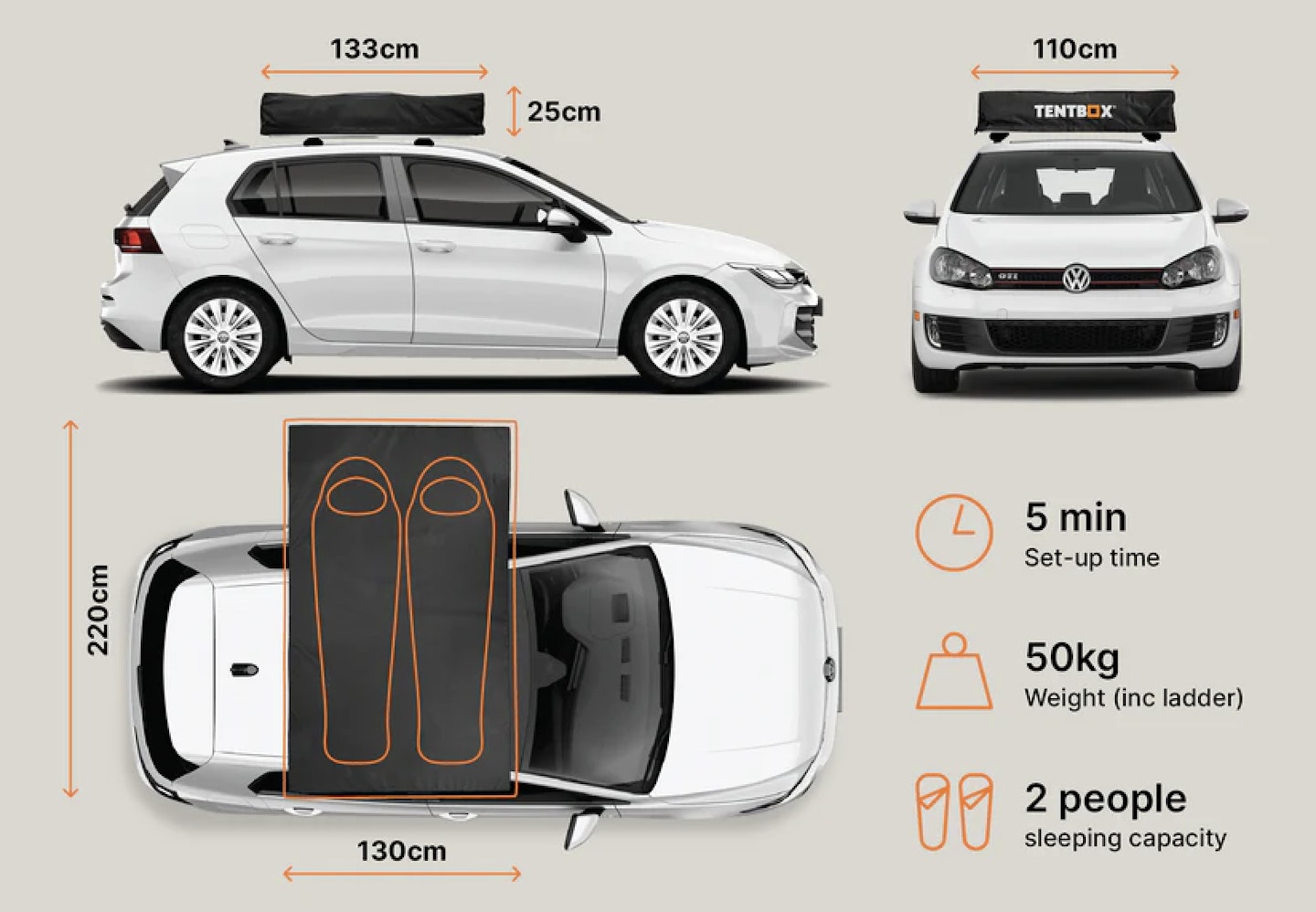
The Roofbunk Explorer (£1,150) does a similar job for slightly less money, as does the Thule Approach for a lot more money (£2,399). Decathlon has entered the market with its Quechua MH500 two-person roof tent (£1,249) and we were excited recently to see Alpkit dip a toe into rooftop tents with their Lookout model, which is similarly priced at £1,299.
From our testing experience, and for the great experiences we’ve had with the TentBox team in terms of customer service, we’d say the TentBox Lite 2.0 is very hard to beat if this is the style of roof tent you’re looking for.
Verdict
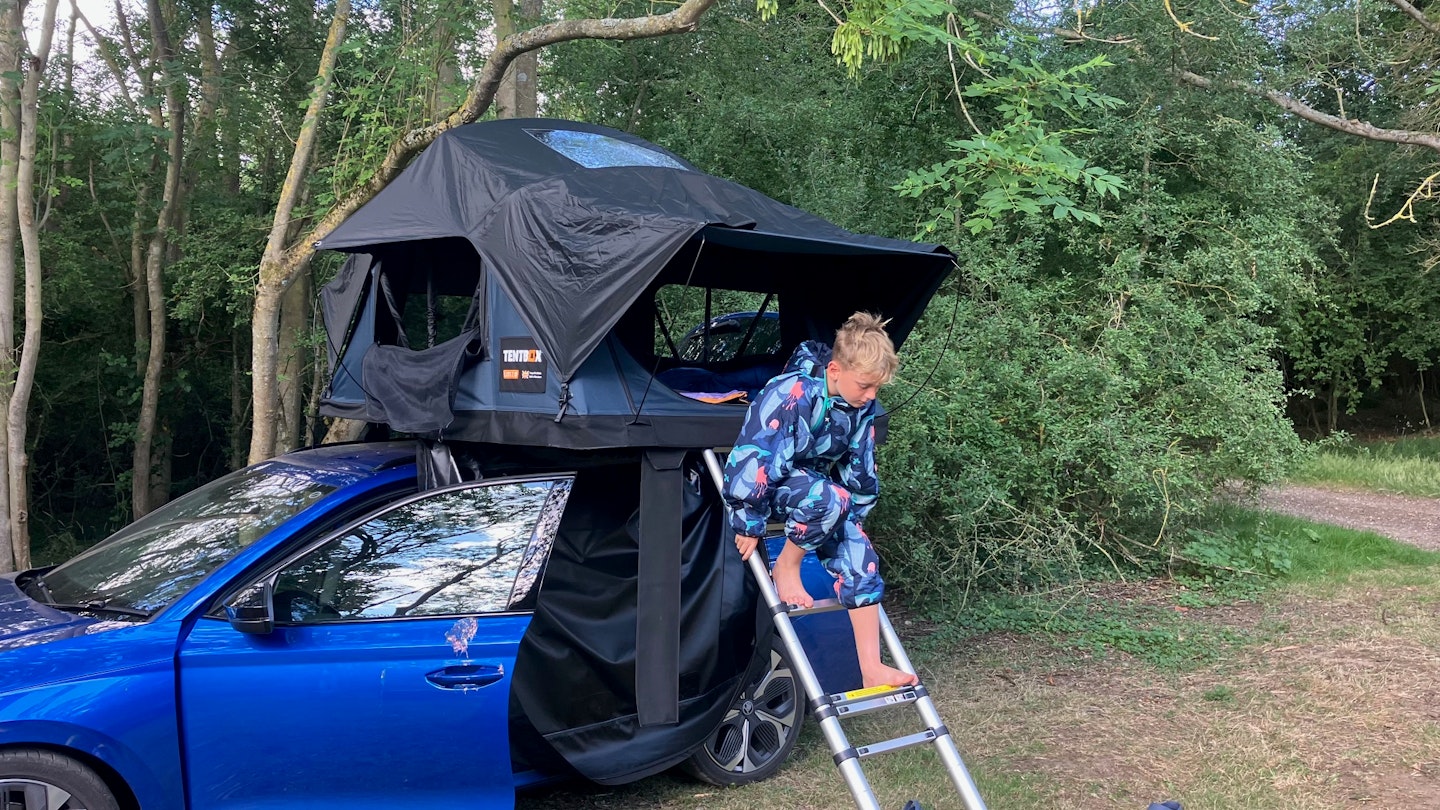
Never mind the best roof tent, the TenBox Lite 2.0 is up there with the best tents we’ve ever used. It’s practical, durable, thoughtfully designed, easy to use, and something that will undoubtedly inject some added adventure into your life.
Of all the roof tents we’ve used so far, this is the model we’d recommend most for someone wanting to experience this new craze for the first time.
Shop this product
About the author
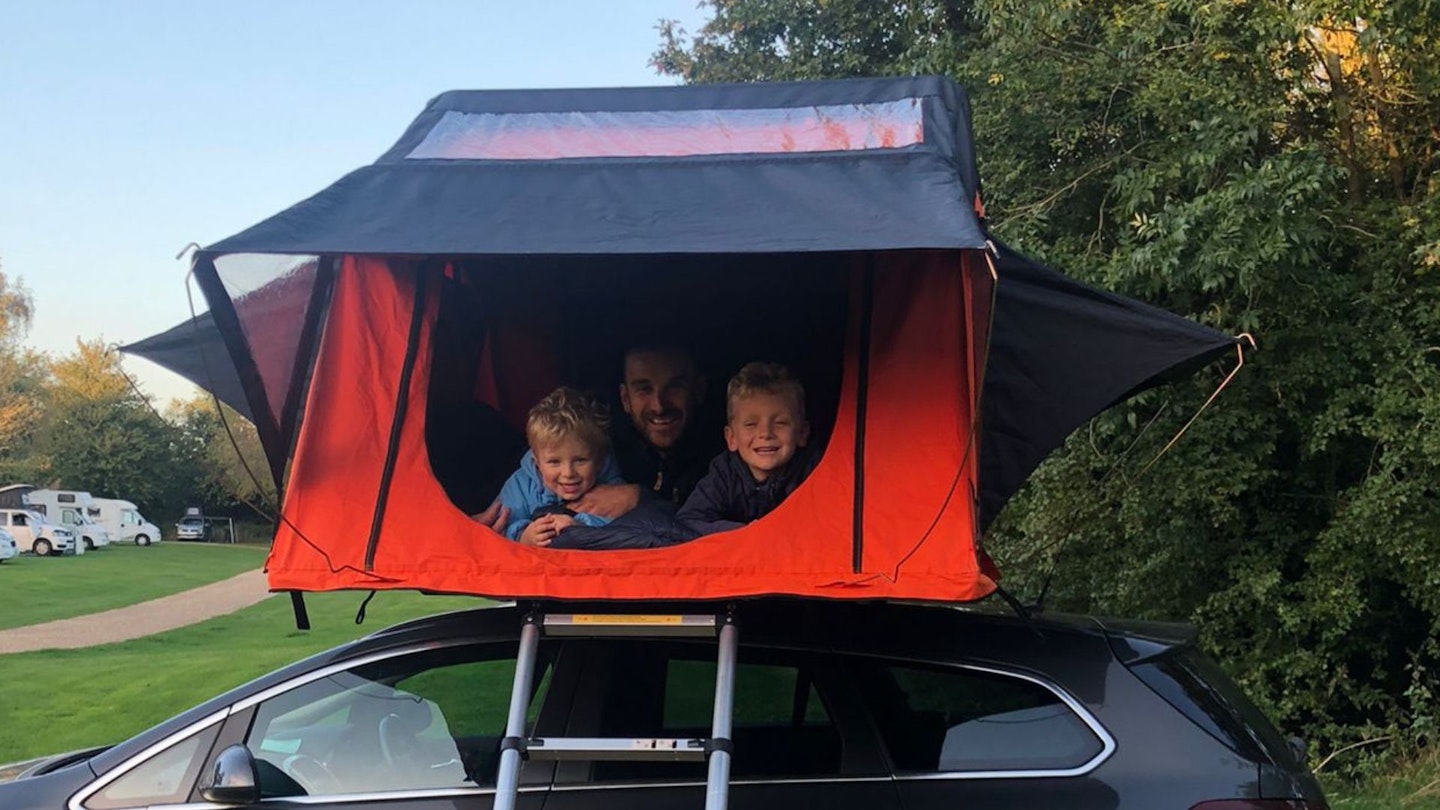
Oli Reed is the editor of Trail magazine and Live for the Outdoors, a lifelong hiker and camper, and father to two young boys who would go camping every weekend if they got their wish. They’ve been camping in roof tents together for four years and rate the TentBox Lite as their go-to piece of kit.
